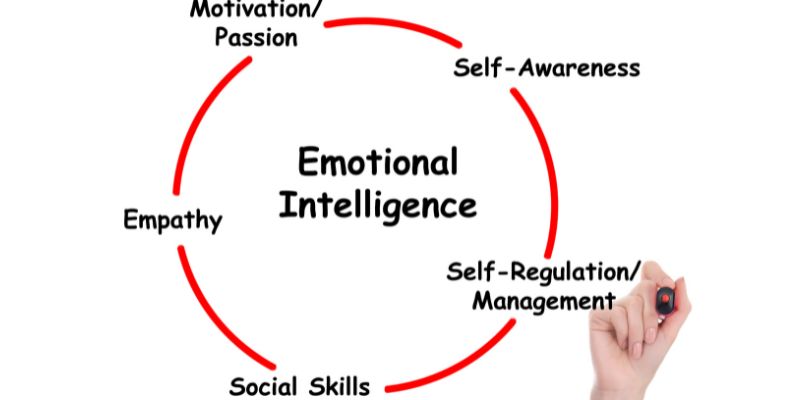Alcohol Addiction Treatment: Road to Recovery

Alcohol addiction, a pervasive issue affecting millions worldwide, poses significant health risks and social challenges. I, Gordon Grigg, am a dedicated male business coach and advocate for personal well-being. I’ve seen the impact of alcohol addiction firsthand. In this article, which is part of the addiction series, we explore effective treatments and support systems that can aid in overcoming alcohol dependency.
Alcohol addiction is a severe and widely prevalent problem that affects individuals of all ages and walks of life. It not only has detrimental effects on physical health but also takes a toll on mental, emotional, and social well-being. However, alcohol addiction is treatable, and recovery is possible with the proper support and treatment plan. In this blog, we will explore the road to recovery from alcohol addiction, understand the science behind alcohol dependency and the health implications of alcoholism, recognize the need for treatment, explore treatment options, the role of medications and behavioral therapies, prepare for the recovery journey, and the importance of support systems.
David’s Struggle and Realization
David’s story, shared through the Priory Group, illuminates the often-hidden struggles behind a seemingly successful life. Despite having a family, a well-paying job, and hobbies, David grappled with deep-seated issues stemming from his adolescence: loneliness, low self-esteem, and a desire for external validation.
His drinking, initially sporadic, escalated in frequency and intensity as adult responsibilities grew. This escalation led to problematic behavior and significant personal and professional repercussions. David’s turning point came when his excessive drinking and resultant actions led to a suicide attempt, following which he sought help from the Priory for alcohol addiction, sex, and love addiction, and unresolved childhood trauma.
Treatment and Recovery
At the Priory, David encountered a diverse community facing similar challenges. He engaged in group therapy, 12-step programs like Alcoholics Anonymous, and one-on-one sessions with an addiction therapist. This comprehensive approach helped him gain insights into his addictive behavior and equipped him with strategies for sustained recovery.
David’s journey is a testament to the transformative power of seeking help and committing to recovery. Over two years into his recovery, he experiences a newfound peace and fulfillment in life without the need for alcohol.
Seeking Help: The First Step
@austingquinn ⚠️The side of alcohol you never see… This is made to spread awareness for addiction and mental health! Dont suffer in silence! Get help! ❤️ #quitdrinking #stopdrinking #mentalhealthawareness #sober #sobercurious #addiction #recovery #recoveryispossible #sobriety #relapse #alcoholwithdrawls #anxiety #panicattack
♬ Last Hope – Steve Ralph
David’s advice to anyone struggling with addiction is unequivocal: seek help. The first step towards recovery is acknowledging the need for professional support. Treatment programs, like the one at the Priory, offer a structured approach to addressing the multifaceted nature of addiction.
Understanding Alcohol Addiction
Alcohol addiction, or alcohol use disorder (AUD), is a chronic condition characterized by the compulsive consumption of alcohol despite its negative consequences. This condition affects millions of individuals in the United States and around the world. It is important to understand that alcohol addiction is not simply a matter of willpower or lack of self-control. It is a complex condition that involves changes in brain chemistry, behavior, and social dynamics. By understanding the underlying factors contributing to alcohol addiction, we can develop more effective treatment strategies and support those on the road to recovery.
The Science Behind Alcohol Dependency
Alcohol use disorder encompasses a wide range of drinking problems, from mild to severe. At its core, alcohol addiction involves alcohol dependence, where the brain and body become reliant on alcohol to function normally. This dependence leads to withdrawal symptoms when alcohol consumption is reduced or stopped abruptly.
The brain’s reward system, which is responsible for feelings of pleasure and motivation, is significantly impacted by alcohol addiction. Chronic alcohol misuse disrupts the normal functioning of this system, leading to increased cravings and compulsive alcohol use. Over time, the brain becomes less responsive to alcohol, leading individuals to consume larger quantities to achieve the desired effects.
When alcohol intake is abruptly reduced or stopped, withdrawal symptoms may occur. These symptoms can range from mild discomfort, such as tremors and anxiety, to more severe symptoms, including hallucinations, seizures, and delirium tremens. Medical supervision and support are crucial during withdrawal to ensure safety and minimize discomfort.
Understanding the science behind alcohol addiction, including the development of alcohol dependence and the occurrence of withdrawal symptoms, is essential for developing effective treatment approaches. By addressing both the physical and psychological aspects of alcohol addiction, individuals can embark on the journey to recovery with greater support and guidance.
Health Implications of Alcoholism

The health implications of alcohol addiction extend beyond the immediate effects of intoxication. Excessive alcohol consumption can lead to a variety of health problems, both physical and mental.
Long-term alcohol abuse is known to contribute to liver disease, including fatty liver, alcoholic hepatitis, and cirrhosis. The liver plays a crucial role in filtering toxins from the body, and heavy alcohol use puts immense strain on this vital organ. Additionally, alcohol addiction can lead to cardiovascular issues, high blood pressure, and an increased risk of heart disease.
Mental health issues often co-occur with alcohol addiction, such as depression, anxiety, and substance use disorders. While alcohol may temporarily alleviate the symptoms of these conditions, it ultimately exacerbates mental health issues and creates a vicious cycle of dependence. Addressing both alcohol addiction and mental health concerns is crucial for comprehensive treatment and long-term recovery.
Moreover, alcohol abuse can have a significant impact on daily life and relationships. It can interfere with work, school, and social obligations, straining personal connections and eroding trust. The effects of alcohol addiction are not limited to the individual; family members, friends, and loved ones are also impacted, leading to additional stress and emotional turmoil.
Recognizing the health implications of alcoholism is an important step toward seeking treatment. Identifying the long-term health risks and understanding the impact on mental well-being can motivate individuals to take action and embark on the road to recovery. By addressing health concerns, individuals can improve their overall quality of life and regain control over their well-being.
Recognizing the Need for Treatment
It’s crucial to recognize the signs of alcohol addiction, such as increased substance use and unsuccessful attempts to cut down. In the United States, the prevalence of alcohol use disorders highlights the need for effective treatment. Symptoms of alcohol withdrawal and the severity of the drinking problem indicate the need for long-term alcohol treatment. Recognizing these signs allows individuals to seek help and undergo a brief intervention as recommended by the National Institute on Drug Administration.
Identifying Symptoms of Alcohol Use Disorder
Identifying symptoms of alcohol use disorder involves a thorough evaluation of drinking patterns and behavioral changes that impact physical, mental, and social well-being. Increased tolerance, withdrawal symptoms, and unsuccessful attempts to cut down on alcohol use are common signs. Understanding diagnostic criteria for alcohol use disorder aids in identifying individuals in need of treatment and promoting timely intervention and support for those with a drinking problem.
When to Seek Professional Help?

Seeking professional help for alcohol addiction is crucial when it starts interfering with daily life, relationships, or work. Treatment often includes family therapy, talk therapy, and support groups. Individuals should seek help if they experience cravings, withdrawal symptoms, or health issues due to alcohol use. Finding the right treatment provider and engaging in ongoing treatment are vital for recovery. Recognizing the impact of alcohol addiction on mental health is also important when deciding when to seek professional help.
Exploring Treatment Options for Alcoholism
Understanding Substance Use: Exploring treatment options for alcoholism is crucial in addressing substance use disorders. The National Institute on Drug Administration suggests long-term solutions for individuals with drinking problems, including brief interventions and medication-assisted therapy for alcohol treatment. It’s vital to consider the effects of alcohol withdrawal and the amount of alcohol consumed when determining the most effective treatment. These strategies are widely used in the United States to help individuals overcome alcohol addiction.
Overview of Alcohol Detoxification
The initial phase of alcohol addiction treatment involves detoxification, eliminating alcohol from the body. This process, supervised for safety and comfort, may lead to withdrawal symptoms requiring medical support. It is followed by ongoing therapy to address the psychological and behavioral aspects of addiction. Understanding this prepares individuals for subsequent treatment stages, ensuring long-term success in managing substance use disorders. The National Institute on Drug Administration recommends brief interventions for those with a drinking problem.
Inpatient vs Outpatient Rehab: What’s Best?
Choosing between inpatient and outpatient rehab depends on the severity of alcohol addiction, individual needs, and support system. Inpatient rehab offers round-the-clock care, while outpatient rehab allows individuals to continue daily activities while receiving treatment. Both options provide structured programs, therapy, and support for alcohol addiction recovery. Make an informed choice based on comprehensive assessment and individual circumstances.
Role of Medications in Alcohol Addiction Treatment

The use of medications in alcohol addiction treatment is crucial for managing withdrawal symptoms. Medications help reduce the urge to consume alcohol by targeting the brain’s neurotransmitters involved in reward and pleasure. The United States Food and Drug Administration has approved various medications for the treatment of alcohol addiction, such as disulfiram, naltrexone, and acamprosate. These medications are often used in combination with counseling and therapy to provide comprehensive care for individuals with alcohol use disorders. The National Institute on Alcohol Abuse and Alcoholism recommends long-term use of medications for better outcomes in alcohol treatment.
Understanding FDA-Approved Medications
FDA-approved medications, overseen by healthcare professionals, are pivotal in addressing alcohol addiction. They effectively mitigate withdrawal symptoms and cravings, often complementing other treatment methods. These medications play a significant role in reducing alcohol intake and sustaining abstinence, contributing to long-term recovery from substance use disorders. With the backing of the Drug Administration, these medications offer valuable support for individuals struggling with a drinking problem, aligning with the principles of national institute guidelines.
The Future of Treatment: Personalized Medicine
Tailoring treatment plans to address individual needs, personalized medicine integrates genetic, environmental, and lifestyle factors. By enhancing treatment effectiveness, this approach may incorporate genetic testing for a more suitable treatment, promising improved outcomes for alcohol addiction treatment. Embracing the potential of personalized medicine holds great promise in advancing the future of substance use disorder care in the United States.
The Role of Behavioral Treatments in Recovery

Behavioral treatments play a crucial role in alcohol addiction recovery. These therapies address substance use disorders through tailored interventions that promote long-term sobriety and prevent relapse. The National Institute on Drug Administration recognizes the effectiveness of behavioral treatments in managing drinking problems and reducing alcohol withdrawal symptoms. In the United States, alcohol treatment commonly incorporates brief interventions focusing on reducing alcohol consumption and preventing further substance use. Such therapies provide individuals with the necessary tools to overcome their addiction and lead fulfilling lives.
Types of Behavioral Therapies
Behavioral therapies play a crucial role in alcohol addiction treatment. Cognitive-behavioral therapy identifies and adjusts alcohol-related thoughts and behaviors. Motivational enhancement therapy tackles ambivalence towards change, while family therapy involves the patient’s family in the treatment process. Group therapy offers peer support and encouragement, and smart recovery emphasizes self-empowerment and self-reliance in recovery. These therapies address various aspects of substance use disorders and are essential for long-term recovery.
Effectiveness of Behavioral Treatments
Behavioral treatments play a crucial role in substance use recovery, fostering coping mechanisms and essential life skills. Tailored to address individual needs and co-occurring disorders, these treatments promote sustained abstinence and overall well-being. They have been proven effective in alcohol treatment and support long-term recovery, addressing much more than just the physical aspects of addiction. The National Institute on Drug Administration recognizes behavioral treatments as a key element in addressing substance use disorders.
Preparing for the Road to Recovery

Assess your substance use habits. Consider seeking alcohol treatment if you have a drinking problem. Be aware of the long-term effects of excessive alcohol consumption and the potential for alcohol withdrawal. Understand that alcohol treatment often involves brief intervention and therapy to address substance use disorders. Recognize that in the United States, the National Institute on Drug Administration offers resources for those struggling with alcohol addiction.
Tips for Selecting the Right Treatment
When selecting a treatment, researching the success rates of options is crucial. Look for programs offering a combination of treatments to address different aspects of substance use. Seek guidance from healthcare professionals and consider the qualifications and experience of the providers. Assess the treatment center’s approach and environment to ensure it aligns with your needs and goals. These steps are essential in finding the most suitable long-term solution for alcohol addiction treatment.
Additional Considerations Before Starting Treatment
Before starting treatment for alcohol addiction, there are additional considerations that individuals should keep in mind, as these factors can greatly influence treatment outcomes and long-term sobriety:
- Address any underlying health problems: It is important to address any underlying health problems that may impact treatment and recovery. Individuals should inform their healthcare provider of any medical conditions or medications they are taking, as they may affect treatment options.
- Recognize the commitment required for alcohol addiction treatment: Recovery from alcohol addiction is a lifelong process that requires commitment, determination, and ongoing support. Individuals should be prepared to make significant changes in their lives, engage in therapy, and actively participate in their recovery journey.
- Discuss concerns with family members or support network: Open communication with family members, friends, and support networks is essential. Discussing concerns, expectations, and recovery goals can help create a supportive environment and foster an understanding of the challenges of alcohol addiction recovery.
- Explore the availability of behavioral therapies and aftercare support: In addition to primary treatment, it is important to consider the availability of behavioral therapies, support groups, and aftercare options. Ongoing therapy, counseling, and support can greatly enhance long-term recovery.
- Prepare for the transition to alcohol rehab and the recovery process: Making arrangements for family, work, and other commitments before entering alcohol rehab can help ease the transition process. Being mentally, emotionally, and practically prepared for treatment can facilitate the recovery journey.
- By taking these additional factors into consideration, individuals can better prepare themselves for treatment, recovery, and long-term sobriety.
Navigating the Recovery Journey
@daily_reprieve The easy way to quit… #drinking #sobertok #recovery #addiction
♬ original sound – Zach Camara
The recovery journey from alcohol addiction is a process that requires persistence, patience, and dedication. This section explores the importance of persistence and patience in recovery, as well as the reality of dealing with relapses as part of the process.
Persistence and Patience in Recovery
Recovery from alcohol addiction is not a linear process but rather a journey with ups and downs. It requires persistence, patience, and a long-term commitment to sobriety.
The recovery process may involve addressing underlying issues, developing new coping strategies, and rebuilding various aspects of life. It takes time to break free from the cycle of addiction and establish a new way of living that is alcohol-free. It is important to recognize that recovery is a process that unfolds gradually, with its own unique challenges and victories.
Patience is key to navigating the recovery journey. There may be setbacks, cravings, and temptations along the way. It is important to remember that recovery is a daily commitment, and each day without alcohol is a step toward long-term sobriety. By practicing self-compassion, accepting setbacks as part of the process, and seeking support, individuals can navigate the challenges of recovery with perseverance.
Rebuilding daily life in recovery requires attention to various aspects, such as relationships, careers, physical health, and mental well-being. It is important to set realistic goals, prioritize self-care, and seek support when needed. Taking small steps, reaching out to a support network, and celebrating milestones can help individuals stay motivated and committed to sobriety.
Dealing with Relapses: Part of the Process

Relapses are common occurrences in addiction recovery, and they should be viewed as a part of the process rather than a failure. It is important to recognize that addiction is a chronic condition that requires ongoing care and support, and relapses can sometimes happen along the way.
A relapse should not be seen as evidence of personal weakness or as an indication that treatment has failed. Instead, it should be viewed as an important first step towards understanding triggers, strengthening coping strategies, and seeking additional support.
Dealing with a relapse requires honesty, self-reflection, and a commitment to getting back on track. It is important to reach out to a treatment provider, therapist, or support group to discuss the relapse, gain insight, and develop a plan of action.
A treatment provider can help individuals identify potential triggers and high-risk situations, develop strategies to avoid or cope with these triggers and adjust the treatment plan accordingly. By working closely with a treatment provider, individuals can gain valuable insights and support as they navigate recovery after a relapse.
Relapse prevention strategies are an important part of the recovery process, helping individuals identify warning signs, develop coping skills, and build resilience. These strategies may include ongoing therapy, support group participation, mindfulness practices, stress management techniques, and ongoing self-reflection.
It is important to remember that recovery from alcohol addiction is a process, and setbacks can be transformed into opportunities for growth and learning. By seeking support, adjusting treatment plans, and maintaining a positive mindset, individuals can overcome relapses and continue on their journey toward long-term recovery.
Support Systems in the Recovery Process
Support systems play a crucial role in the recovery process, providing individuals with the necessary encouragement, guidance, and understanding as they navigate the challenges of alcohol addiction recovery. This section explores the importance of family and friends’ support and the potential benefits of mutual support groups.
Importance of Family and Friends Support

Family and friends’ support is invaluable in recovery, offering emotional support, accountability, and additional resources. Having a strong support system can greatly enhance treatment outcomes and long-term sobriety.
Family members and close friends can provide a stable support network, offering encouragement, understanding, and a listening ear. They can be pivotal in motivating individuals to stay committed to their recovery goals, helping with practical aspects of daily life, and celebrating milestones.
In addition to emotional support, family members and friends can also provide additional support in the form of attending therapy sessions, participating in family therapy, and learning about alcohol addiction to better understand the challenges individuals face. This involvement fosters a sense of unity, encourages open communication, and strengthens relationships, creating a healthier and more supportive environment for recovery.
Social workers, addiction counselors, and support group facilitators can also offer guidance, support, and additional resources in the recovery process. These professionals are trained to provide assistance, advice, and motivation, helping individuals navigate the challenges of recovery, connect with other recovery resources, and maintain long-lasting sobriety.
It is important to communicate openly with family members, close friends, and support professionals about recovery goals, progress, and ongoing needs. Individuals can build a strong support network that enriches their recovery journey by involving loved ones and support professionals in the recovery process.
Are Mutual-Support Groups Helpful?
Support groups like Alcoholics Anonymous (AA) provide peer support for people who are quitting or cutting back on their drinking.
Mutual support groups offer valuable shared experiences, promoting accountability and camaraderie. Members provide empathy, understanding, and practical advice while sharing coping strategies. The non-judgmental atmosphere fosters hope and inspiration.
Conclusion

Overcoming alcohol addiction is a journey that requires commitment, support, and the proper treatment approach. As someone dedicated to helping individuals overcome their struggles, I urge anyone dealing with alcohol addiction to seek professional help. With the proper support, recovery is achievable.
Alcohol addiction is a complex condition that requires professional treatment and ongoing support. Recognizing the need for treatment and seeking help is the first step towards recovery. There are various treatment options available, including detoxification, inpatient or outpatient rehab, and the use of FDA-approved medications. Behavioral therapies play a crucial role in addressing the underlying causes of addiction and developing healthy coping mechanisms. It is important to prepare yourself for the road to recovery by selecting the right treatment program and considering additional factors such as mental health and support systems. Remember, recovery is a journey that requires persistence, patience, and the support of your loved ones. You don’t have to face it alone. Reach out for help and start your road to recovery today.
Alcohol Addiction Treatment: Road to Recovery Read More »
























































